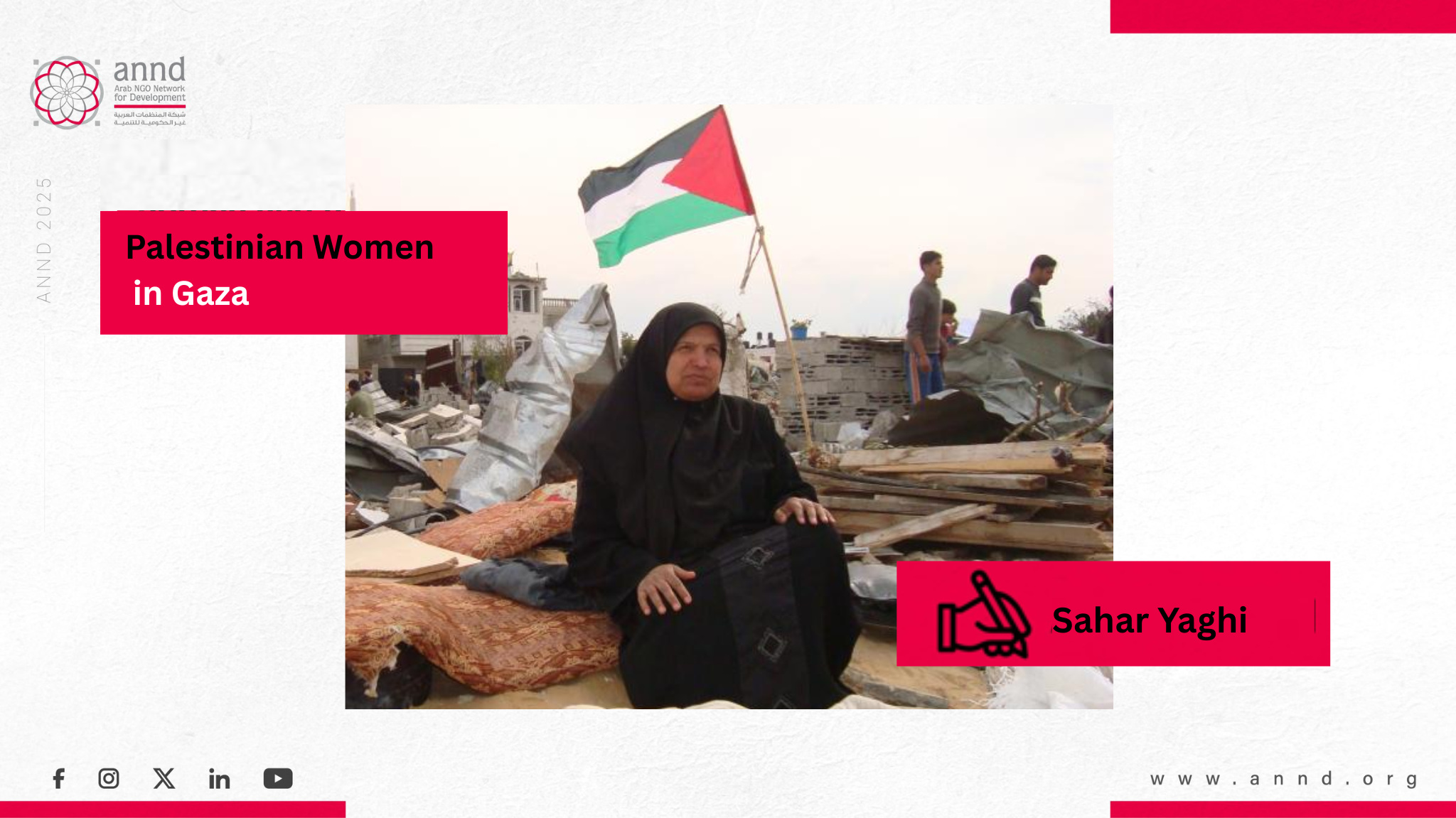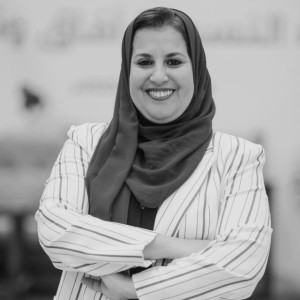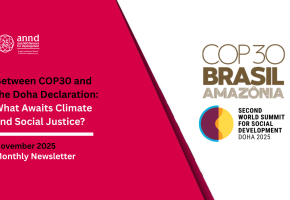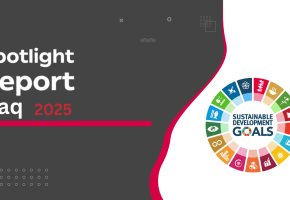Palestinian Women in Gaza: Resilience in the Face of War – Sahar Yaghi
In a worn-out tent on the outskirts of Rafah, a mother of four sits in front of a primitive stove. Just two years ago, she was choosing the color of her home curtains and planning a small birthday celebration for her eldest daughter, who was turning ten. Today, she counts instead the number of times they escaped death, and the number of names in her phone that have turned into a short sentence: “Killed with her family.”
This mother is not an exception in Gaza, but one face among thousands of women whose lives have been overturned in moments. The tent has become a permanent address, water a daily journey, bread a battle, and calming the children before sleep an achievement more difficult than surviving the bombing. Between the ruins of a lost home and the memories of photos that now exist only in memory, the woman in Gaza stands every morning to reinvent the meaning of motherhood and life under an announced war of extermination.
Women in Gaza have not been able to choose the shape of their lives since October 7, 2023. They wake up to the sound of bombing instead of their children’s voices, carry their tents instead of their homes, and count the missing more than they count the living. In an overcrowded tent or on the rubble of a destroyed house, many women stand between two harsh roles at once: survivors of genocide, and guardians of life in its smallest details—from a loaf of bread to rare medicine, to easing the fear of children at night.
This suffering is not a side effect of the war; it is at the heart of the brutality of the ongoing Israeli violence against the Gaza Strip since October 7, 2023. Continuous bombing targeted homes, hospitals, schools, shelters, and government institutions, attempting to push residents into repeated displacement and forced expulsion, using the most powerful weapons to widen the circle of killing and destruction. At the center of all this, the woman in Gaza has paid a double price for every minute she lives under bombing and siege, as a mother, provider, survivor, and witness all at once.
First: Human Losses and the Direct Impact of the War
According to data from the Palestinian Ministry of Health in Gaza, more than 28,000 women and girls have been killed since the beginning of the war until the end of 2024. This staggering number reflects the scale of the systematic targeting of civilians, with women and children making up about 70 percent of the total victims, according to UN reports.
In addition to the dead, more than 16,000 women have become widows after losing their husbands, bearing the responsibility of supporting their families under extremely harsh humanitarian and economic conditions. About 70 percent of the injured — more than 96,000 people, according to the Ministry of Health — are women and girls, many of whom suffer permanent disabilities and limb amputations.
There is also an unknown number of women who have been arrested at military checkpoints or from inside their homes during raids. Some have been released, but the fate of many remains unknown — whether they are still detained or were killed and buried in mass graves, according to human rights organizations.
Second: The Humanitarian Reality and Daily Living Conditions
Women were deprived of their homes and forced into multiple displacements, in some cases more than ten times, as documented by the UN Office for the Coordination of Humanitarian Affairs. The tent became a house, a kitchen, and a bedroom all at once, where all family members live together — and sometimes more than one family in a single tent.
This reality represents a blatant violation of privacy and dignity, especially for women who lost their husbands and now live alone with their children. Their responsibilities have doubled: fetching water from distant locations, if available, and securing food amid a systematic starvation campaign and tightened blockade. Israeli authorities prevented food supplies from entering for extended periods and prevented cooking gas, forcing women to use dangerous alternatives.
For nearly a full year, many women in Gaza have been cooking food using firewood or alternative materials such as used oil or diesel derivatives — practices that have caused respiratory illnesses and skin allergies for them and their children, according to WHO reports.
Third: The Collapse of the Health System and Its Impact on Women
Occupation forces targeted 722 health facilities, including hospitals, primary care centers, clinics, and pharmacies, according to the Palestinian Ministry of Health — meaning that about 94 percent of the health system was destroyed or severely damaged. Out of 36 hospitals in Gaza, only 19 are currently functioning, and with extremely limited capacity, lacking specialized staff, equipment, medicines, and beds.
This massive destruction has disrupted entire units vital for women, such as maternity wards and neonatal intensive care units. Thousands of pregnant women — estimated at more than 50,000 by the UN Population Fund — have lost access to regular medical follow-ups and essential tests, increasing health risks and sharply raising rates of miscarriages and maternal and newborn deaths.
In documented cases, doctors were forced to perform cesarean sections without full anesthesia due to shortages of medicines and medical supplies. The lack of medications and inability to access treatment have also threatened the lives of women with cancer, diabetes, hypertension, kidney failure, and other chronic conditions.
Fourth: Psychological and Social Impact and Gender-Based Violence
Living under continuous bombardment, repeated displacement, and the loss of home and family have created unprecedented psychological pressures on women. Many lost their homes, shelter, husbands, children, and relatives in a short period. They were uprooted from their social environments and daily sense of safety and found themselves in overcrowded, unfamiliar places with no privacy or stable community support.
Family support has diminished due to geographic fragmentation, while hunger and deprivation have intensified. Women lost their private spaces and safe environments and became removed from essential services, increasing the effort required to access healthcare, education, and aid, leaving deep psychological and social effects.
In this context, the phenomenon of child marriage has emerged as a form of gender-based violence. Desperation, poverty, and fear have pushed some families to marry off their daughters at a young age — a trend observed by local and international rights organizations. Before the current war, UNFPA studies indicated that three in every ten women in Gaza, aged 20–49, had married before the age of 18, a rate higher than that of the West Bank.
With the war, recent UN reports confirm that increased poverty, displacement, and the collapse of protection systems have heightened the risks of child marriage and domestic violence against girls.
This reality threatens the future of girls, exposing them to disease, pregnancy and early childbirth complications, reducing their chances for education and employment, and perpetuating a cycle of violence and poverty.
At the same time, the war has severely weakened institutional services. Many government agencies and UNRWA have been disrupted, reducing women’s access to social and health services. Local and feminist organizations have attempted to fill part of the gap by providing psychological support, reproductive health services, dignity kits, cash assistance, and limited economic empowerment programs. However, these interventions remain far below the rapidly increasing needs.
Fifth: Women in International Humanitarian Law
The genocide carried out by the occupation has exposed women to direct and continuous danger, in stark violation of international laws and norms. Assaulting women in armed conflicts is a full-fledged war crime and a clear violation of international humanitarian law.
The Fourth Geneva Convention of 1949, its two Additional Protocols of 1977, and the 1954 Hague Convention guarantee special protection for women during war. UN Security Council Resolution 1325 on Women, Peace, and Security also grants additional protection and emphasizes women’s roles in peace processes and post-conflict reconstruction.
Article 27 of the Fourth Geneva Convention states that protected persons must be respected at all times regarding their persons, honor, family rights, religious convictions, and practices, and must be protected against all acts of violence or threats. Article 14 also calls for the establishment of safety zones to protect the wounded, the sick, the elderly, children under 15, pregnant women, and mothers of children under seven.
Sixth: Women’s Resilience and the Meaning of Bearing Witness
Despite this immense suffering, the woman in Gaza has transformed from a silent victim into a living symbol of resilience and determination. She has clung to what remains of her home and family, standing at the front lines to secure the bare minimum of life’s necessities. She works relentlessly to provide water, food, and medicine, regulate life in the tent or among the ruins, and maintain social peace in a community exhausted by siege and war.
The Palestinian woman in Gaza is not a number in victim records but a witness to the strength of human will in the face of an announced genocide. In every tent, in every water line, and in every attempt to rebuild life from under the rubble, women are redefining the meaning of survival. Their resilience is testimony for generations to come — that humanity does not succumb no matter how severe the trials, that life is stronger than death, and that hope, despite everything, remains a thin thread held by a woman determined to protect her home, her children, and her story.



